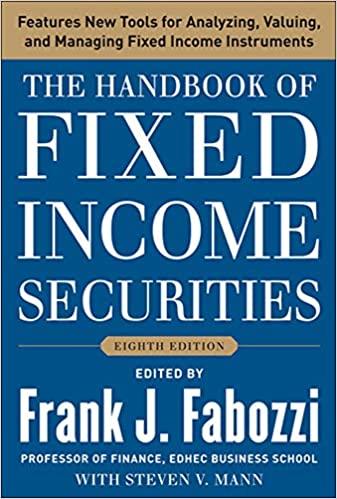Background : In this Problem Set, questions 1-5 will have you look at some simple relationships among the payback period, IRR and the NPV for
Background: In this Problem Set, questions 1-5 will have you look at some simple relationships among the payback period, IRR and the NPV for cash flow series. The concepts are very general so you will want to remember them for the rest of your career !!
You are investing $100,000 in a business (time zero). You want to work out the payback period, IRR and the NPV (with i=10%) for four different possible cash flows that the business could return. They are:
Case A: $10,000 in each of the next 10 years starting in year 1
Case B: $25,000 in each of the next 10 years starting in year 1
Case C: $50,000 in each of the next 10 years starting in year 1
Case D: $100,000 in each of the next 10 years starting in year 1
Problem 1
Work out the Payback Period, IRR and NPV (with i=10%) for each of these cases and fill in the following table. Express the IRR to the nearest tenth of a per cent and the NPV to the nearest hundred dollars. Then answer the following questions:
Problem 1A: What is the Payback Period for Case D ? (5 Points)
Problem 1B: What is the IRR for Case B ? ( 5 Points)
Problem 1C: What is the NPV for case A ? (5 Points)
Case | Payback Period | IRR, % | NPV at 10% |
A |
|
|
|
B |
|
|
|
C |
|
|
|
D |
|
|
|
Problem 2
What trends do you notice from the table you created when you answered Problem 1 ?
Worth 20 points
Problem 3
Calculate the IRR if the return on the $100,000 investment was only $10,000 per year for the next 10 years. What is the best answer from among those below ?
Worth 20 points
Problem 4
In Case B for Problem 1, what is the IRR if the investment in the business is changed to $400,000 and the project returns $100,000 per year for the next 10 years ? Hint: You shouldnt have to do any math !
Worth 20 points
Problem 5
In Case A for Problem 1, what is the IRR and also what is the NPV if the $10,000 per year continues on forever (infinity !) instead of for only 10 years ? Hint: You shouldnt have to do any math !
Worth 40 points20 for the correct IRR and 20 for the correct NPV
2
Step by Step Solution
There are 3 Steps involved in it
Step: 1

See step-by-step solutions with expert insights and AI powered tools for academic success
Step: 2

Step: 3

Ace Your Homework with AI
Get the answers you need in no time with our AI-driven, step-by-step assistance
Get Started


